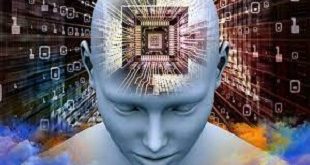Introduction:
In the domain of mechanical development, mechanical exoskeletons have arisen as an image of human expansion, pushing the limits of what the human body can accomplish. These wearable automated gadgets, frequently suggestive of advanced exosuits from sci-fi, are intended to improve human strength, versatility, and perseverance. This article investigates the captivating universe of automated exoskeletons, diving into their starting points, the innovation that powers them, flow applications, continuous examination, and the significant effect they are making on the existences of people with versatility challenges.
Starting points and Advancement of Mechanical Exoskeletons:
The idea of wearable advanced mechanics to upgrade human abilities has its underlying foundations in the military and clinical fields. The earliest exoskeleton models were created for military use, planning to expand warriors’ solidarity and perseverance on the combat zone. Over the long haul, this innovation tracked down its direction into the clinical space, where it started to be investigated for of recovery and help for people with versatility debilitations.
Progressions in materials science, advanced mechanics, and biomechanics have been instrumental in the development of automated exoskeletons. The shift from unbending, weighty exosuits to lightweight, versatile plans has denoted a defining moment in their turn of events, making them more commonsense and open for different applications.
Key Parts and Advances:
Actuators and Engines:
Actuators and engines are the force to be reckoned with of automated exoskeletons, giving the vital power to help or expand human development. These parts are liable for making joint developments, mirroring and upgrading the normal movements of the human body.
Sensors:
Automated exoskeletons are outfitted with a variety of sensors that screen and answer the wearer’s developments. These sensors give constant information on variables like joint points, muscle movement, and equilibrium, permitting the exoskeleton to appropriately change its help.
Power Source:
The power source is a basic part, deciding the perseverance and convenience of a mechanical exoskeleton. Progresses in battery innovation have empowered the improvement of more minimized and strong energy sources, considering longer use between charges.
Biomechanical Plan:
The biomechanical plan of automated exoskeletons expects to reproduce the normal scope of movement of human joints. This includes cautious thought of the construction and adaptability of the exoskeleton to guarantee an agreeable and ergonomic fit for the client.
Control Frameworks:
Modern control frameworks, frequently integrating man-made consciousness calculations, decipher sensor information and improve the help given by the exoskeleton. These frameworks expect to make a consistent and natural communication between the wearer and the innovation.
Applications in Recovery and Medical care:
Assistive Gadgets for Versatility Disabilities:
Mechanical exoskeletons have demonstrated to be groundbreaking for people with portability impedances, like those with spinal line wounds or neurological problems. These gadgets give urgent help, empowering clients to stand, walk, and recover a degree of freedom that was once thought unreachable.
Recovery and Active recuperation:
In recovery settings, automated exoskeletons are utilized as apparatuses for non-intrusive treatment. By giving controlled help and obstruction, these gadgets help in the recovery of patients recuperating from strokes, wounds, or medical procedures. They offer a designated and adaptable way to deal with treatment, advancing the recuperation of engine capabilities.
Older Consideration:
Mechanical exoskeletons have shown guarantee in older consideration by offering help to people with decreased muscle strength and soundness. These gadgets help with strolling and lifting, decreasing the actual burden on guardians and encouraging more noteworthy portability and freedom for the older.
Treatment for Neurological Problems:
For people with neurological issues, for example, Parkinson’s infection or numerous sclerosis, mechanical exoskeletons offer a way to further develop step and portability. The innovation helps with keeping a more customary and composed strolling design, moderating the effect of these issues on day to day existence.
Modern and Military Applications:
Modern Exoskeletons:
In the modern area, exoskeletons are utilized to expand the actual abilities of laborers. These gadgets lessen the burden on the outer muscle framework, especially in assignments that include hard work or monotonous developments. Modern exoskeletons improve specialist security, diminish weariness, and increment in general efficiency.
Military Exosuits:
The tactical keeps on investigating the utilization of exoskeletons to improve the actual capacities of fighters. Exosuits can help with conveying weighty burdens over significant distances, giving troopers expanded perseverance and decreasing the gamble of wounds during genuinely requesting missions.
Difficulties and Future Bearings:
Cost and Openness:
Regardless of huge headways, the expense of mechanical exoskeletons stays a boundary to broad reception. Making these gadgets more reasonable and open for people and medical services foundations is a basic test that specialists and producers are attempting to address.
Flexibility to Individual Necessities:
Guaranteeing that automated exoskeletons can be adjusted to the assorted necessities of clients is a continuous test. People with various kinds and levels of portability debilitations might require customized changes and arrangements for ideal usefulness.
Incorporation with Medical services Frameworks:
Consistent combination of mechanical exoskeletons into existing medical care frameworks is pivotal for their far reaching reception. This includes tending to administrative contemplations, protection inclusion, and guaranteeing that medical care experts are prepared to actually use and endorse these advances.
Scaling down and Transportability:
Progresses in scaling down are fundamental for improve the versatility and solace of automated exoskeletons. More modest, lighter parts can add to expanded client acknowledgment and empower people to serenely wear these gadgets for additional drawn out periods.
Advancement of Pediatric Exoskeletons:
While steps have been made in the advancement of exoskeletons for grown-ups, making pediatric exoskeletons presents exceptional difficulties. These gadgets should represent the development and improvement of kids, making them versatile to changing body measures and guaranteeing wellbeing and solace.
Neurological Connection point Upgrades:
The connection point between the exoskeleton and the client’s sensory system is an area of continuous examination. Working on the bidirectional correspondence between the exoskeleton and the client’s mind and sensory system could improve the accuracy and responsiveness of these gadgets.
Moral Contemplations:
Independence and Informed Assent:
The utilization of mechanical exoskeletons brings up issues about independence and informed assent, especially when utilized in medical care settings. It is urgent to guarantee that clients completely figure out the abilities, constraints, and potential dangers related with these advancements.
Protection and Information Security:
As mechanical exoskeletons produce and send touchy biomechanical and wellbeing related information, protection and information security are fundamental. Severe conventions should be set up to defend client data and forestall unapproved access.
Fair Access:
Guaranteeing evenhanded admittance to mechanical exoskeleton innovation is a moral goal. Endeavors ought to be made to try not to make differences in that frame of mind on financial elements and to focus on the necessities of people with restricted assets.
Current Advancements and Future Prospects:
Delicate Exoskeletons:
Delicate exoskeletons address another outskirts in wearable mechanical technology. These gadgets utilize delicate, adaptable materials and materials to offer help and help. Delicate exoskeletons offer a more regular and agreeable fit, possibly expanding client acknowledgment.
Cerebrum Machine Points of interaction (BMIs):
Research is in progress to coordinate cerebrum machine connects with automated exoskeletons, permitting clients to control the gadgets straightforwardly through brain signals. This could give a more instinctive and normal communication between the wearer and the exoskeleton.
High level Materials:
Propels in materials science are adding to the advancement of exoskeletons produced using lightweight and solid materials. Carbon fiber, specifically, is being investigated for its solidarity and adaptability, offering a harmony between primary trustworthiness and client solace.
Energy Gathering:
The joining of energy-reaping innovations, for example, regenerative slowing down or sunlight based power, expects to improve the independence of automated exoskeletons. By tackling energy from the climate, these gadgets might possibly work for additional drawn out periods without requiring continuous re-energizing.
Expanded Reality (AR) Incorporation:
Increased reality highlights are being investigated to improve the client experience with automated exoskeletons. This incorporates furnishing clients with constant input on their developments, integrating gamification components into restoration works out, and making vivid preparation situations.


